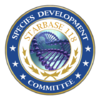Catullan: Difference between revisions
Dueld taJoot (talk | contribs) |
Dueld taJoot (talk | contribs) |
||
| Line 42: | Line 42: | ||
Standard for many M-class worlds: <br> | Standard for many M-class worlds: <br> | ||
Tribes became small city-states. <br> | |||
City states combined into larger economic and political units (kingdoms, empires, republics) by aggression or treaty. <br> | |||
Larger units fractured back into smaller ones as conditions changed (natural disasters making powerful states into weak ones, failures in inherited leadership, technological discoveries providing temporary economic advantages to rivals, etc.)<br> | |||
<br> | <br> | ||
The peninsulas and islands of Catulla ensured that smaller city-states lasted longer and occurred more frequently in Catullan history than on drier worlds. Amalgamation under a single world government took much longer than the average Federation member world.<br> | The peninsulas and islands of Catulla ensured that smaller city-states lasted longer and occurred more frequently in Catullan history than on drier worlds. Amalgamation under a single world government took much longer than the average Federation member world.<br> | ||
Revision as of 21:00, 23 August 2013
| This article is undergoing an expansion or major revamping. However, you are welcome to assist in its construction by editing it as well. Comments regarding possible improvements are welcome on the articles talk page. |
| Intelligent Lifeform Index |
|---|
| Catullan | |
|---|---|

| |
| Four Letter Code | CATL |
| Federation Status | Member |
| Planet of Origin | Catulla |
| Encountered | TOS: The Way To Eden |
| T/E Rating | T0/E0 |
| Current Tech Level | O |
| List of Named Catullans | |

| |
Full ILI Gallery • Permitted Species Gallery | |
Humanoids, Catullans are noted starship engineers and many successful design yards are based out of the Catullan system. The well-known Yoyodyne Propulsion Systems was co-founded by Terrans and Catullans and is headquartered on Catulla. Their other sciences and society are slightly less advanced, but well up to Federation standards.
Name
- Proper Name: Catullan
- Pronunciation:
Home System
- Quadrant: Beta
- Location: ?? Sector (coordinates B27-0002-1300 )
- Proper Name: Cendo Ipraem
- Pronunciation:
- Star: It orbits a class G (Yellow) star
- Distance from Star: orbit is approximately 148 million km
- Companions: 4 other planets. It is the 3rd planet in the system
Home World
- Proper Name: Cendo Prae
- Pronunciation:
- Diameter: 13,585km (8,441 miles)
- Gravity: 1.3 standard gravity with a density of 6.3
- Axial Tilt: 6.4%, slight seasonal variance
- Orbital Period: 339 days
- Rotational Period: 27 hours
- Classification: M
- Surface Water: 82.1%
- Atmosphere: 1.2 is a standard pressure with 75% nitrogen, 24% oxygen, 1% trace chemicals
- Climate: Bulk of land masses occur within semi-equatorial and true equatorial zones
- Population: Just over 2.28 billion
History
Standard for many M-class worlds:
Tribes became small city-states.
City states combined into larger economic and political units (kingdoms, empires, republics) by aggression or treaty.
Larger units fractured back into smaller ones as conditions changed (natural disasters making powerful states into weak ones, failures in inherited leadership, technological discoveries providing temporary economic advantages to rivals, etc.)
The peninsulas and islands of Catulla ensured that smaller city-states lasted longer and occurred more frequently in Catullan history than on drier worlds. Amalgamation under a single world government took much longer than the average Federation member world.
Not all, but most of planet's arable/inhabitable land is within two days' foot travel from sea, and generally slopes perceptibly upward from coast into mountains. There are very few plateaus or plains above sea level. This makes foot travel slow and arduous compared to travel on water, and as a consequence naval power rather than infantry was traditionally the dominant means by which control of territory was asserted.
Some scholars assert that the necessity to make the most of every single accessible resource in order to survive and progress has contributed to Catullan engineering prowess. They point to the need for
- terraced agriculture and irrigation,
- freshwater conservation,
- earthquake/storm-resistant architecture,
- gains in arable land by early terraforming (berms and seawalls),
- mining which caused the minimum possible disruption of other surface uses,
- ships which made the best possible use of rare timber and metals,
- technology for navigation and cartography,
- portability and durability (water-proofing?) as a dominant feature in item development.
Other scholars dispute this, pointing out that on many worlds cultures which develop in warm, welcoming tropical climates have the least pressure to evolve.
Government
Description
Physiology
Psychology
Religion
Mythology
Society
Culture
Customs
Technology
Economy
Military
Federation Intelligence Files
Sources
| SPECIES PROFILE UPDATED This profile was revised by the Species Development Committee. |
REV 239008.23 | |||
| Please add any new information discovered during the course of a mission or shore leave. | ||||
| SB118-SDC | ||||

